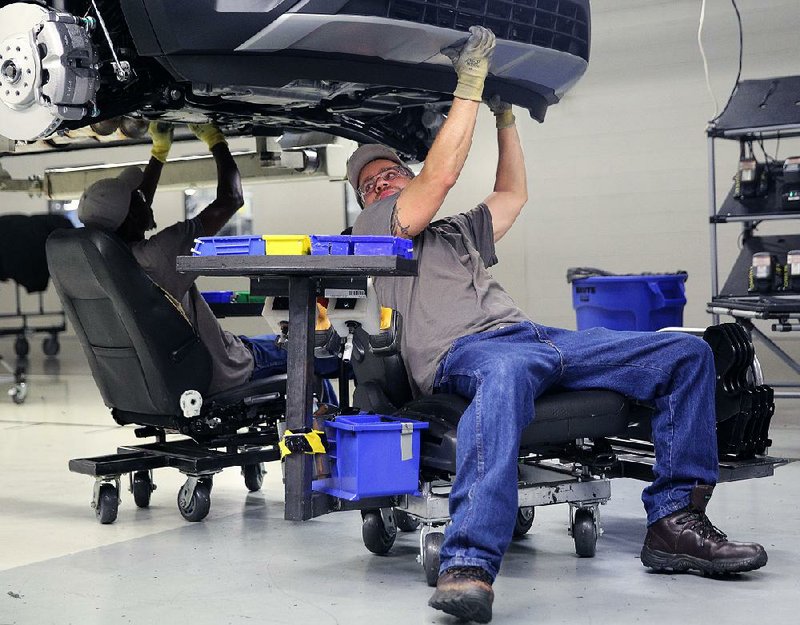WASHINGTON -- U.S. industrial output fell 0.9 percent in August, the most in eight years, mostly because of Hurricane Harvey's damage to the oil refining, plastics and chemicals industries.
The storm, which slammed into the Gulf Coast in Texas and Louisiana late last month, accounted for 0.75 percentage point of the decline, the Federal Reserve said Friday. That suggests production would have slipped without the hurricane.
The Gulf Coast is home to many of the nation's oil refiners, and petroleum is a key component in the manufacturing of plastics and chemicals.
Manufacturing has picked up since last summer as the dollar has fallen in value, which makes U.S. goods cheaper overseas, increasing exports. Manufacturing production fell 0.3 percent last month, though the Fed said that without the hurricane, it would have increased roughly 0.5 percent.
And a survey of manufacturing firms that preceded Harvey found that factory activity rose to a six-year high in August.
Still, the report illustrates how Harvey has disrupted the wider U.S. economy. Jennifer Lee, senior economist at BMO Capital Markets, said the data included signs of weakness, even excluding the impact of Harvey.
"The August decline was widespread," she said.
Lee cut her estimate for third-quarter economic growth to 2 percent at an annual rate, from an earlier forecast of 2.4 percent. A drop in retail spending last month was also a factor. But she also expects growth to rebound in the fourth quarter as rebuilding from Harvey and Irma gets underway.
Industrial production includes mining and utilities as well as manufacturing. Utility output tumbled 5.5 percent as milder temperatures on the East Coast reduced air-conditioning use.
And mining production fell 0.8 percent last month as Harvey temporarily shut down the drilling of oil and natural gas and refining operations.
Factory activity in New York has been strong in September after reaching a three-year high in August.
The Federal Reserve Bank of New York said Friday that its Empire State manufacturing index dipped to 24.4 in September, a level that still points to a brisk pace of growth for factories. The August reading of 25.2 had been the highest since September 2014.
New orders, shipments and hiring all increased this month. Manufacturers were also investing more in their plants and were confident that business would keep improving over the next six months.
The index measures sentiment among firms in New York state. It is closely followed by economists because it provides an early read on factory output nationwide. Manufacturing has enjoyed a period of steady growth after slumping for parts of 2015 and 2016.
Manufacturers have steadily hired this summer. They added 36,000 factory jobs in August, 26,000 in July and 21,000 in June.
U.S. businesses increased their stockpiles in July, but at a slower pace than in June. Sales also rose by a small amount.
Business inventories rose by a seasonally adjusted 0.2 percent in July after June's gain of 0.5 percent, the Commerce Department said Friday. The June increase in inventories was the most since a 0.9 percent gain in November of last year.
Sales rose 0.2 percent in July, matching the June gain.
Economists expect that inventory growth will strengthen further in coming months and help support overall economic expansion.
Economists believe that businesses rebuilding their stockpiles could add as much as a half-percentage point to overall economic growth in the current quarter.
When businesses increase stockpiles, it is generally seen as a sign of their confidence that sales will increase in the coming months. A decrease in inventories can be a sign of pessimism about future sales.
July inventory gains were led by a 0.6 percent increase in stockpiles at the wholesale level and a 0.2 percent uptick in the manufacturing sector. Those increases helped offset a 0.1 percent drop-off in retail inventories.
Information for this article was contributed by Christopher S. Rugaber, Josh Boak and Matt Ott of The Associated Press.
Business on 09/16/2017
